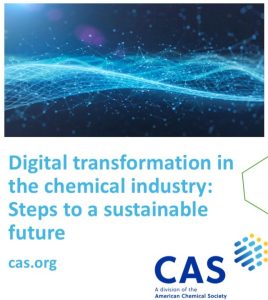Like many other countries around the world, India has also been steadily increasing its renewable energy (RE) capacity. The Economic Times reported that in just the five years between 2016 and 2021, RE capacity doubled from 50GW to 105GW. This progress has affected industries of all kinds, including the fast-growing chemical industry. Chemical companies’ transitions toward more widespread usage of solar energy stands to not only provide economic benefits, but also improve the environmental status of the sector.
Here’s how…
The Chemical Industry in India
The chemical industry is essentially responsible for producing and managing basic chemicals and their derivatives; petrochemicals, paints and varnishes, gases, fertilisers, alcohol, etc. It is heavily relied upon by other industries, which makes it a high-consumption sector. According to The Guardian, the global chemical industry consumes more than 10% of fossil fuels globally and emits an estimated 3.3 gigatonnes of greenhouse gases each year. Catalytic procedures demand intense heating and pressure to produce reactions, so businesses rely largely on fossil fuels.
The Indian chemical industry ranks as the sixth-largest in the world, and the third largest in Asia. The Climate Group reports that 12% of total manufacturing emissions are specifically from the chemicals sector, with demand for ammonia and petrochemicals constantly increasing at a rapid rate. This is why the industry requires transformative technology for scaling up decarbonisation. And solar energy offers one way to create a more sustainable chemical industry in India.
How Solar Power Helps the Chemical Industry
Besides the conversion of sunlight into electricity, solar-driven chemistry is able to process (a) the conversion of sunlight into electricity, (b) the conversion of sunlight into chemical energy, (c) the photochemical synthesis of valuable molecules, and (d) photochemical pollution remediation, as noted by a study published in RendicontiLincei.
Among the four, the conversion of sunlight into electricity remains to be the most stable and profitable use. Photovoltaic electricity stored in batteries can be used to power electric engines, which are three to four times more efficient than internal combustion engines. Moreover, Hoymiles notes that shifting to solar allows manufacturers to take advantage of government incentives such as capital subsidies, tax credits, and rebates depending on the location. In fact, solar power can reduce company power costs by 20-40%.
Research published in Frontiers in Energy Research shows that concentrated solar thermal systems and photovoltaic solar power solutions can also be used as solar energy sources for the production of chemicals. But while the conversion of solar energy into chemical energy and artificial photosynthesis both validate major breakthroughs, much work still needs to be done to make them more efficient ways to produce chemical energy. As for pollution remediation, some notable examples include the production of synthetic fuels by co-electrolysis, the electrochemical reduction of CO2, and the photocatalytic fixation of nitrogen to ammonia.
There’s also the question of whether concentrated solar thermal systems and photovoltaic solar power solutions can be used to power energy-intensive, continuous processes, or only for batch processing. According to this study found on BMC Chemical Engineering, renewable energy can be used to supplement both. For instance, some plants may function 24/7 with different energy levels, while others are fully switched on and off. Solar power can augment power for both to operate continuously within a limited range of operations.
According to Manu Karan, Vice President of CleanMax, solar power can be a very effective supplementary source of energy for chemical plants. There are, however, a few roadblocks in the viability of solar technology, including grid dependency and complicated grid synchronization.
The Future of a Solar-Powered Chemical Sector
Overall, many economic, sustainability, social, and political aspects are involved with the increased usage of solar power in the chemical sector. With that, there should be a steady push for the development of new tools for chemical engineering assessment, as well as innovative methodologies for the development of materials, reactors, and processes needed to bolster the transition to more sustainable use of energy and chemistry.
Many of the world’s biggest corporations have signed the RE100 pledge, which aims to achieve 100 percent renewable energy sourcing within a stipulated timeframe. More and more corporations are also seeing the economic benefits and cost-effectiveness of investing in solar energy systems, and this is further propelled by new government policies and incentives. Moving forward, India plans to implement efforts for the adoption of RE and other clean energy technologies — not only for the public use of electricity, but for other energy applications as well.
Refrences
The Guardian
https://www.theguardian.com/environment/2021/nov/22/chemicals-industry-pollution-emissions-climate
The Climate Group
https://www.theclimategroup.org/our-work/publications/spotlight-decarbonising-heavy-industry-india-narratives-iron-and-steel-cement
CleanMax
https://chemindigest.com/power-of-solar-in-the-industry
Rendiconti Lincei
https://link.springer.com/article/10.1007/s12210-019-00836-2
Hoymiles
https://www.hoymiles.com/energy-storage/
Frontiers in Energy Research
https://www.frontiersin.org/articles/10.3389/fenrg.2021.677980/full
BMC Chemical Engineering
https://bmcchemeng.biomedcentral.com/articles/10.1186/s42480-019-0006-8
Chemical Industry Digest
https://chemindigest.com/

































